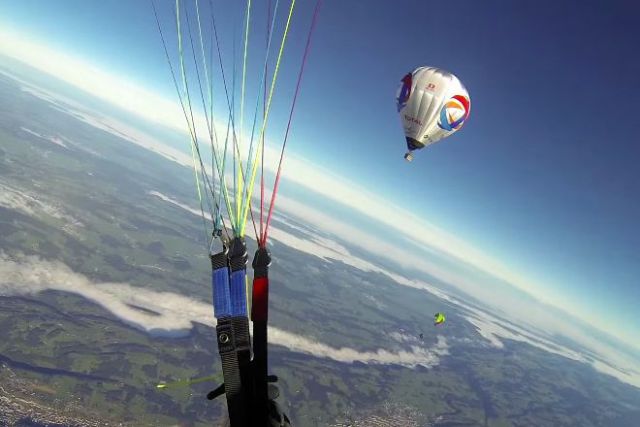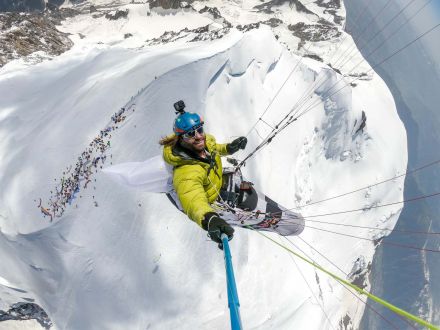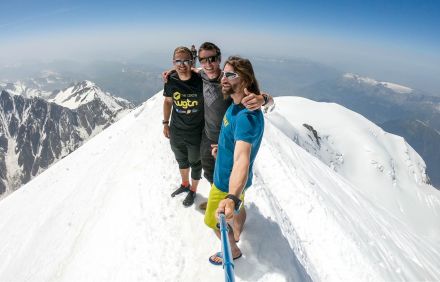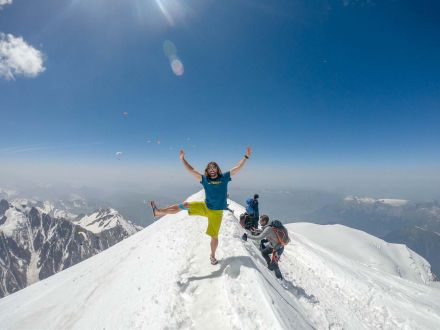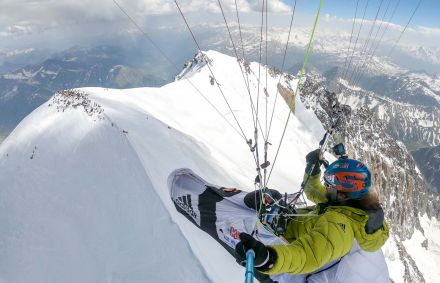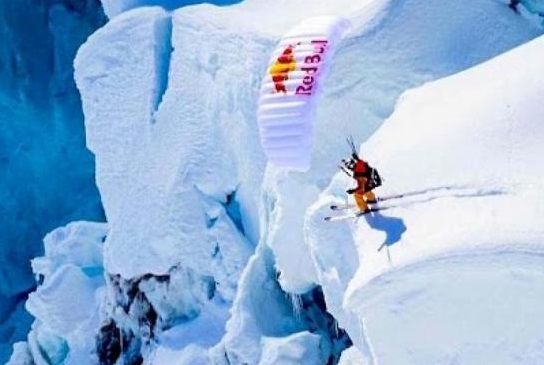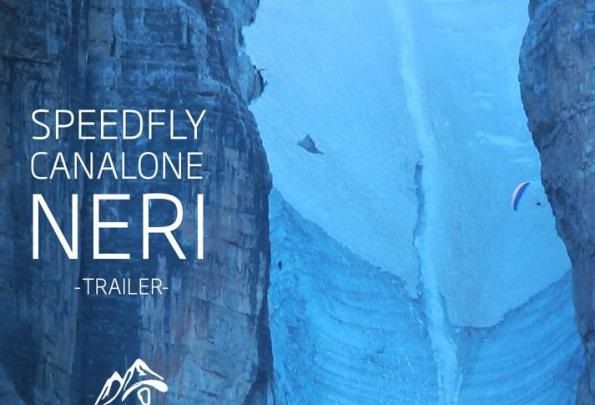Top-landing en el Mont Blanc o en chancletas en el techo de Europa
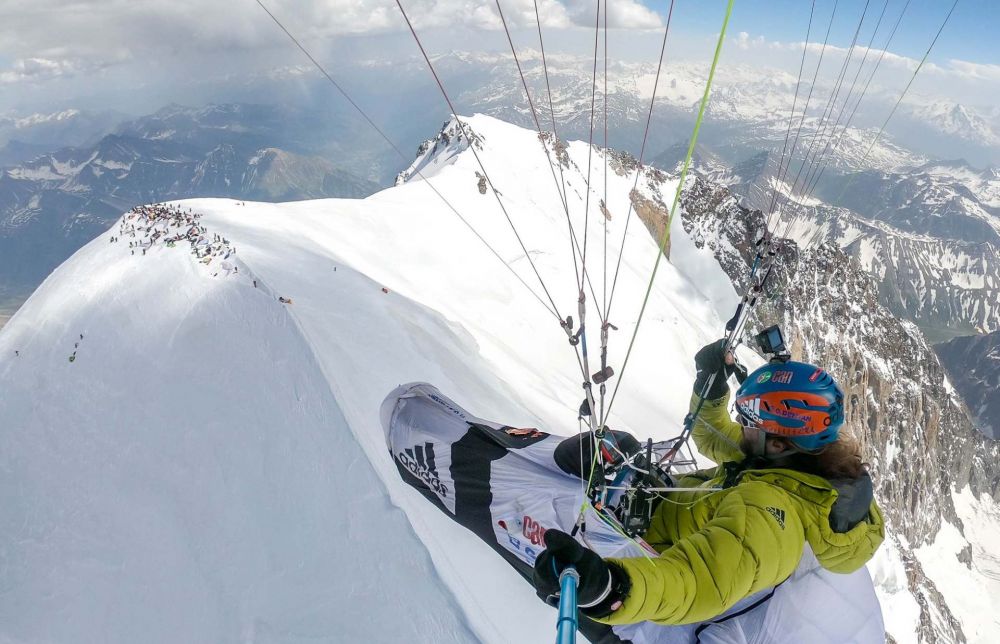
Antoine Girard critica a los pilotos
En la cumbre había unos 200 y me llamó la atención uno de ellos, el conocido aventurero Antoine Girard, quien en su perfil de Facebook atacó con dureza a estos pilotos. Esta convencido que aquel día no tenía nada que hacer en el Mont Blanc por lo menos un tercio de los pilotos, y que los pilotos no se daban cuenta del riesgo de volver a arrancar a tanta altura. No habían pensado en la eventual necesidad de bajar a pie, en caso de un empeoramiento de las condiciones. Mencionó por ejemplo que a tales alturas hay menos oxígeno, lo que influye el movimiento y la concentración, y recordó que en otra expedición a más de 6900 m él mismo tuvo la posibilidad de aterrizar en una cumbre por una foto, pero por su propia seguridad no lo hizo.
Aquel día la mayoría de los pilotos por suerte salio de forma segura del Mont Blanc, aunque por desgracia costó la vida a una persona. Girard se pregunta entonces si vale la pena para el ego arriesgar la propia vida, y apela al propio sentimiento de responsabilidad.
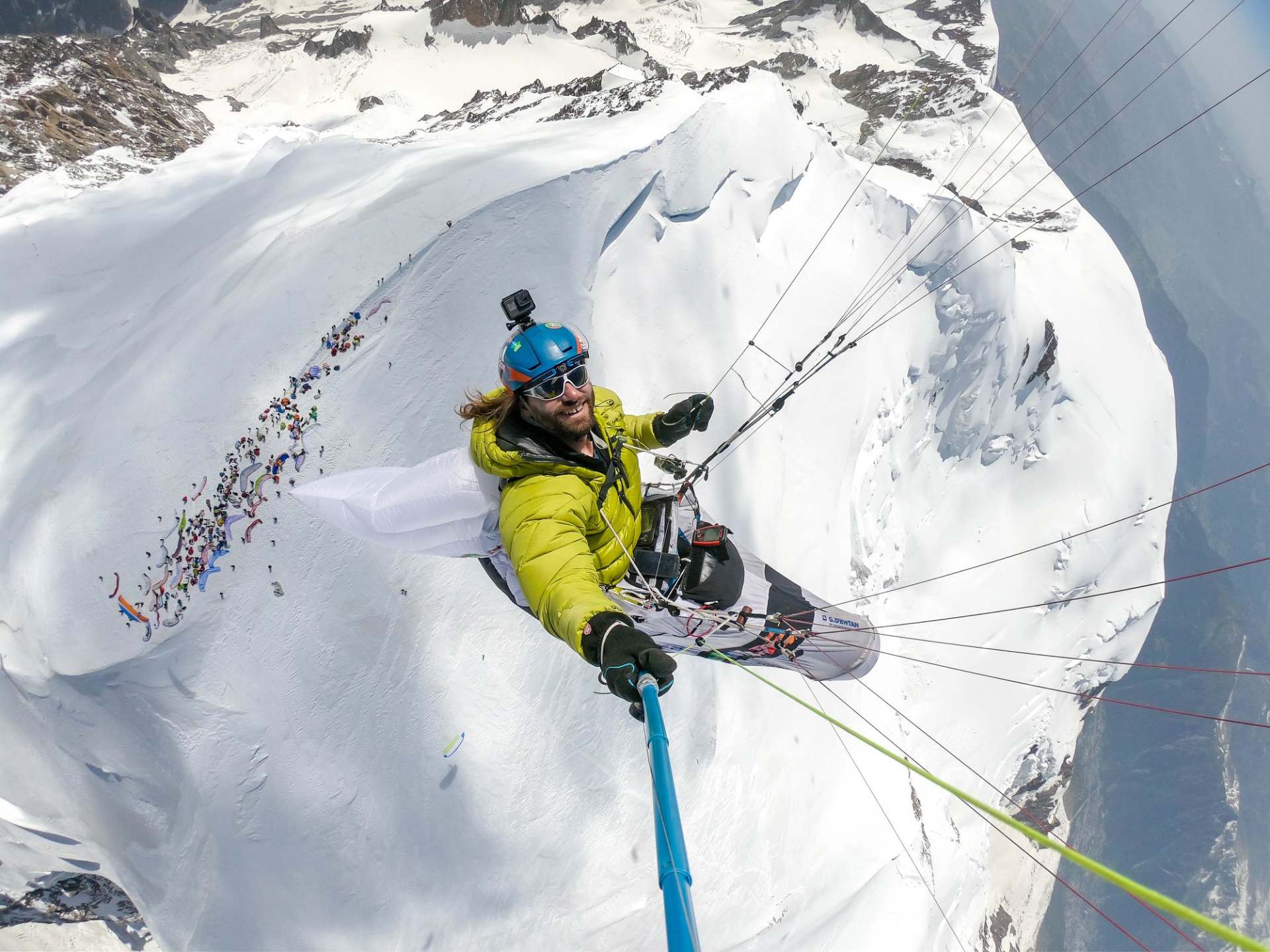
Translation of the post from Facebook - Antoine Girarda, who has 1326 shares and 366 comments to date:
“Outraged!
I landed on Mont Blanc (15,777 ft), the top of Europe, along with a bunch of friends and part of my paragliding relatives! According to me, this could’ve been a great day, if it weren’t for the foolishness of countless people, and the stress overload from watching them moving on and risking their lives in such a way.
Too little pilots were aware of the danger, and it was a wonder that not a single person died (which is already one too much)I do have a certain experience linked to my history in the management of altitude paragliding and mountaineering. My various expeditions taught me plenty. Here’s what really scared me.
The main issue remains hypoxia. Similarly to alcohol, one quickly feels like a superman while the level of reflection is at its lowest. Sensible decision-making is far more impaired and as a result, the landings turned out disastrous. Not to mention those who cratered the flat summit snow, the tailwind landings, or even those who rolled upon flat areas. However, I only mention those who truly put their lives into danger, those who missed the landing on the summit and instead of searching for the 18,045 feet high thermal in order to land properly, decided to land no matter what! Hence, they crashed 33, 98, 164, or even 328 ft below the summit, amid the steep slopes’ mountain crevices and without any alpine experience not equipment! The only reason they’re alive was because the snow was soft enough to keep them from slipping. Had the snow been a few inches thinner or a little less thick, all of them would have met their doom! The snow was fine, but that was impossible to know beforehand. Once they had landed, most of them couldn’t bear move, and could neither shift nor climb without risking plummeting down the slope. Thankfully, guides were present on the summit and spent several hours delivering first aids at the risk of their lives.
I do not question those who had the verve to land 164 ft below on the south ridge, which was safe that day.
The picture speaks for itself…
The mountain forgave and forgot loads during this first summit landing, which is quite rare indeed.
Once you’ve landed, you should be able to take off once more! I don’t think half the pilots were aware of how difficult taking off at about 16,404 ft was. It’s hard to run 16,404 ft, if not more, in soft snow.
There are two ways to solve this issue: either to have the sufficient technical expertise in paragliding along with the appropriate equipment (wing and light harness for greater nimbleness), or to provide for the equipment and to have the skills to walk all the way down.
The take off phase was a risky business for many pilots: many of them needed help to manage taking off, while others only pulled through by miracle, by jumping down. Leaving aside those who needed 2 or 3 attempts at taking off safely, I’d like to mention those who jumped down without any kind of control. . I saw several pilots jumping off the steep slopes with sharply tilted wings… Once again, the paramedics were there to contain the damage by searching for the reckless people or the take-off helper who did his best to assist the take-off.
Don’t be fooled by the pictures: the lack of threat is due to the fact most pilots either bore the right equipment or had the level of experience to remain safe. None of the pilots we saw in shorts and flip-flops on the summit had flown with that kind of equipment!!! It had been kept in the harness before to being taken out on the summit, in order to take pictures condemning the effects of climate change! (Keeping a sunshade and towel in a harness in not quite as easy as it seems!)
Most pilots had the level needed or the necessary equipment, but a good third of them had nothing to do on top of the Mont Blanc. Most of all, too many pilots weren’t aware of the real risks. All in all, the outcome is nearly fortunate compared to what could have happened – a single deadly accident. . But it’s one accident too many, which deeply saddens me. The day’s outcome could have been far more dire.
Being against any kind of prohibition, I therefore can’t support the choice of banning landing upon the Mont Blanc… I’m for general awareness along with the personal responsibility consciousness. But honestly, the obliviousness of so many pilots has left me terror-struck and I now understand this ban. It’s a shame such a pleasant thing should be outlawed because of a minority of pilots. Perhaps we should work harder on raising awareness? I have no idea, though I shudder at how too many pilots were willing to land no matter what.
On my last expedition, the over-flight of the Aconcagua (22,841 ft), I wanted to land on the summit. I finally decided against it because I considered my safety margin too thin – though the summit was large, flat and people were taking off from every side. Compared to many pilots’ landing on the Mont Blanc, my margin was comfortable, to say the least. But is your own ego worth putting your life at risk? Beyond acting really selfish, what to think of the paramedics who risk their own lives, and the relatives who will suffer permanent damage?
What could’ve been a day of sheer pleasure along with a paragliding festival was tarnished by the behaviour of too many pilots. Sorry, but I do feel the need to express my outrage.
I’m going to try to forget all this and to carry on sharing lovely pictures of that day, which was all the same delightful to the eye.
Plenty of friends and pilots, still unknown to me, listened to reason and decided against landing. They were right to do so and will live to see their old piloting days. Others were stressed once they reached the summit by the sole awareness of the risk. Said awareness often keeps you alive. These rare behaviours comforted me slightly on the fact mankind wasn’t solely led by ego. Or part of it, at least!
Have a good flight!"
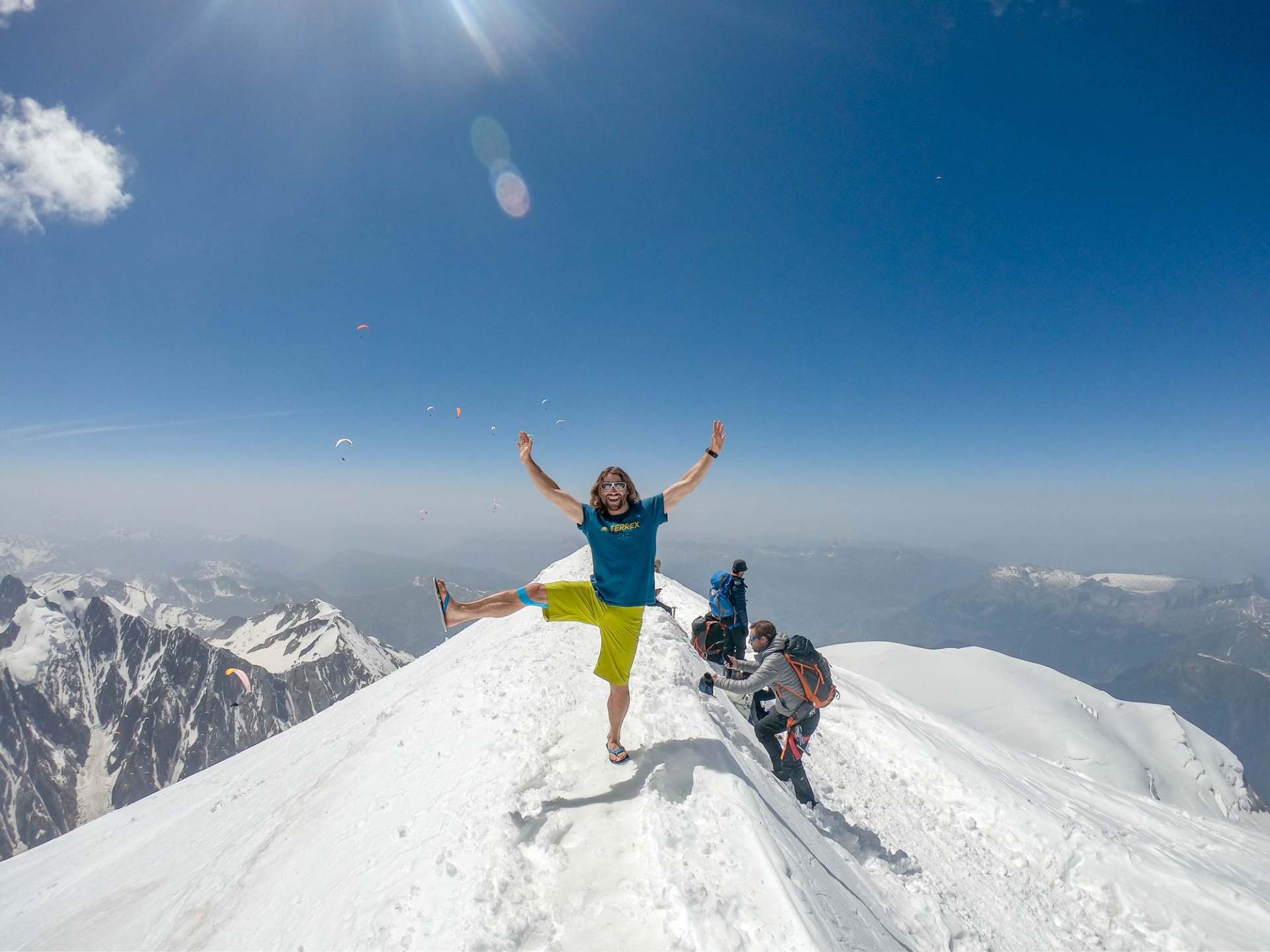
Kinga Masztalerz critica a Girarda
En el interesante debate posterior otra corredora del Red Bull X Alps del año, la neozelandesa Kinga Maszalerz, elogió la sabia aportación de Antoine, pero no dudó en recordarle que él mismo aterrizó por una foto en la cumbre del Mont Blanc y se mostró (incluso en chancletas) a aquellos a los que debía dar ejemplo.
¿Qué pensáis vosotros de estas cosas? ¿Es una diversión segura? ¿Aterrizaríais también por una buena foto?
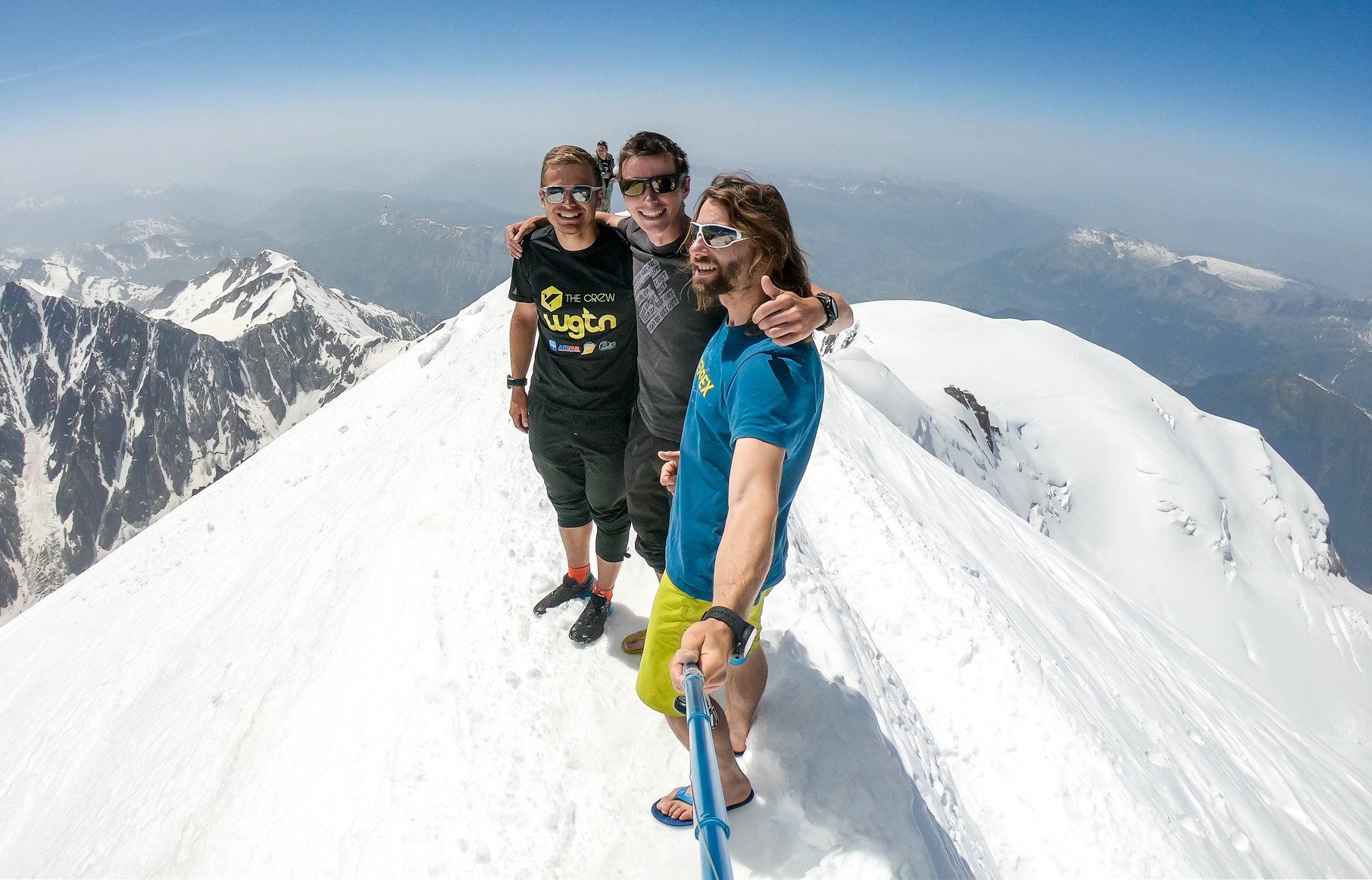
foto: www.facebook.com/antoinegirardfly/
texto: Jiří Zábranský – www.cloudbase-hunters.cz






